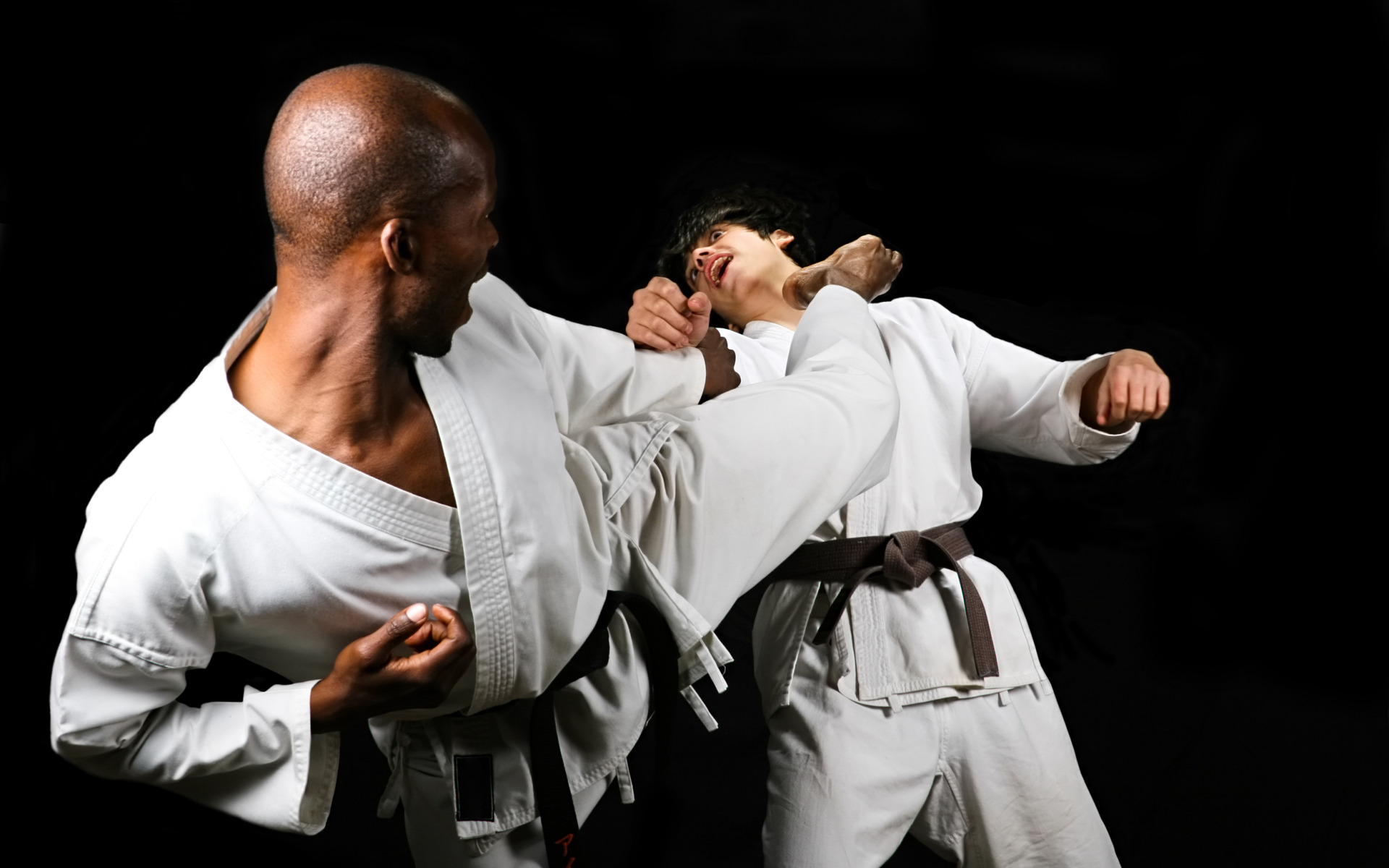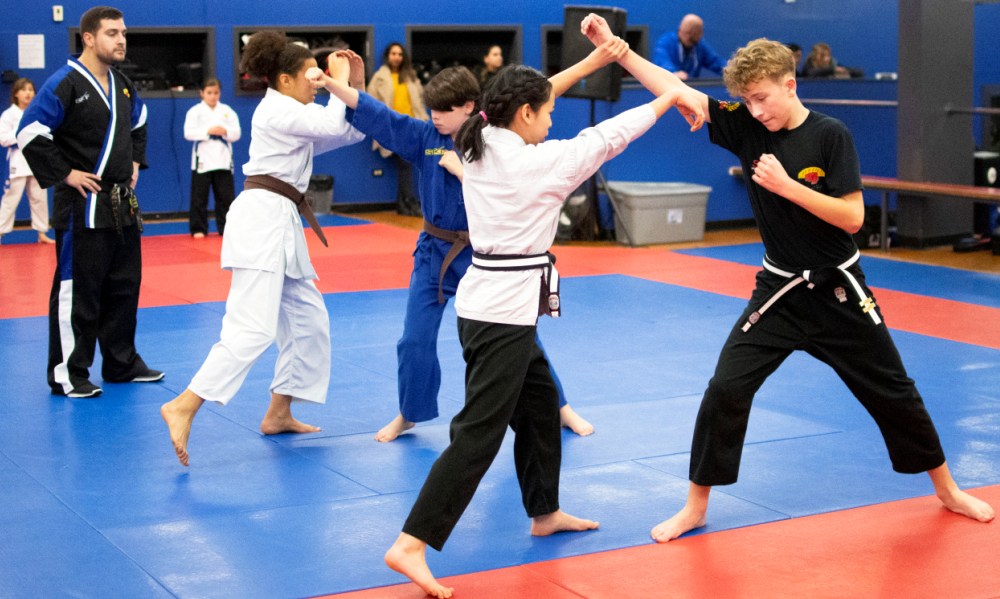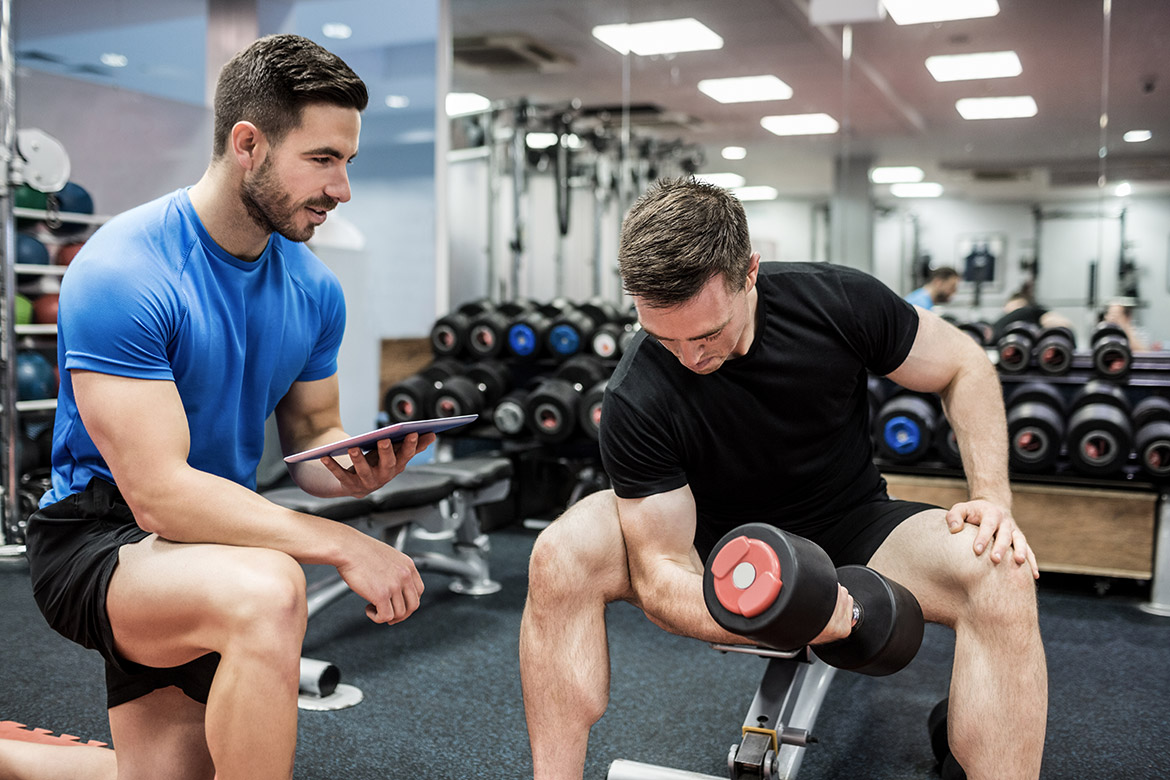Introduction Of Martial Arts Fitness
Are you looking for a martial arts program that is going to make your body and mind fit as much as possible? The ultimate goal in this fast-paced world is holistic wellness. Because of its various styles and rich heritage, martial arts has been identified as an exceptional route to total fitness. From muscle cultivation to mental discipline refining, this article scrutinizes the many ways in which integrating martial arts into your exercise routine can be beneficial. Dive right in and discover the secrets of martial arts greatness.
Section 2: The Historical Roots of Martial Arts Training

Martial arts have deep roots historically which are intertwined with sociocultural, philosophical, and pragmatic aspects. This understanding significantly contributes to comprehending what martial arts fitness means.
**1. Origins and Evolution:** For thousands of years, throughout regions like Asia, Europe, or Africa, there have been different forms of martial arts. Each community had unique military tactics and systems designed based on societal needs or philosophies.
**2. Ancient Traditions and Philosophies:** Some of these ancient traditions rooted in philosophical principles like discipline respect honor are found in today’s several martial arts disciplines. For instance, Karate karate from Japan among others was influenced by Bushido which was a code of conduct for samurais emphasizing self-discipline as well as loyalty.
**3. Cultural Significance:** Martial art was not just combat but also cultural traditions that defined who they were culturally speaking. Practices such as Kung Fu practiced in China; Taekwondo from Korea; Capoeira originated from Brazil among others all reflect deeply ingrained cultural roots handed down through generations.
**4. Spread and Globalization:** Over time, continents became connected via trade routes enabling the motion of martial arts skills through the migration process leading to globalization thus facilitating the exchange of knowledge between practitioners and enriching the variety existing within fighting methods worldwide.
**5. Modern Influence and Adaptation:** In contemporary times, it is important to note that we still have martial arts and they are being developed to fit the current lifestyle of human beings. While preserving traditional forms, modern martial arts utilize elements of sports science, psychology, and biomechanics that help enhance performance and promote fitness.
Practitioners can gain a richer understanding of the discipline by examining its historical roots within martial arts as well as recognizing why it is still relevant today concerning contemporary fitness practices.
Section 3:Key Principles of Martial Arts Fitness

For trainees to get maximum results from their workouts, they need to understand key principles that underlie martial arts training. Let us now examine these principles:
**1. Discipline:** Martial arts fitness begins with discipline. In this case, fighters should be disciplined enough to follow strict routine training programs adopting appropriate techniques during practice sessions. Martial arts discipline extends beyond the mat and affects other aspects such as eating habits; and sleeping patterns among others.
**2. Consistency:** Continuing training is important for progress in martial arts fitness. To illustrate, regular practice enables practitioners to build up a set of muscles and develop better flexibility along with perfecting their moves over a period thereby creating room for consistent training which ultimately culminate into enhanced physicality and psychological endurance bringing them closer home i.e., fitness goals.
**3. Patience:** A virtue emphasized during martial arts teachings is patience since progress takes time hence demanding persistence throughout the process towards the development of martial arts skills. Through the cultivation of patience, one acquires the resilience necessary for sustaining a lifelong approach thus allowing him/her to realize his/her goals in terms of healthiness together with overall well-being without any difficulty at all but through exercise only.
**4. The Mind and the Body:** Martial arts practices teach that mind and body are one. By practicing mindfulness, individuals synchronize their breaths with their movements, thus granting them greater focus, better coordination, and improved overall performance. When one has a strong connection between his mind and body he can achieve fitness while also improving clarity of mind as well as emotional health.
**5. Respect:** Respect is highly valued in the martial arts culture. They learn how to respect their trainers, fellow trainees as well as the traditions of their particular martial art form. Such respect nurtures an environment that is supportive and interactive among practitioners which facilitates mutual trust development besides comradeship in training.
Through these basic principles of martial arts exercises, they will be able to unlock all their potential which will lead to the whole person’s well-being during the fitness journey.
Section 4:Types of Martial Arts and Their Fitness Benefits

Martial arts include various fields with different methods for teaching techniques suitable for different exercise goals. It helps one identify the type of martial art that suits him best according to his preference or physical objective. Here are some popular martial arts types along with their fitness benefits:
**1. Karate:**
– Originating from Okinawa, Japan, Karate focuses on punches, kicks, and knee strikes as striking techniques.
– Fitness Benefits: Cardiovascular endurance is improved through Karate training which works out agility as well as muscular stamina. Furthermore, it develops coordination while reflexes are honed by movement drills done repetitively or sparring practice.
**2.Taekwondo:**
– Developed in Korea; Taekwondo teaches dynamic kicking techniques such as high kicks and fast footwork among others.
– Fitness Benefits: Taekwondo training promotes balance flexibility power in lower body strength essential for explosive powerful kicks particularly flexibility speed agility required for rapid delivery of powerful kicks
**3.Brazilian Jiu-Jitsu (BJJ):**
– Coming from Brazil; BJJ is grappling methods and ground fighting.
– Fitness Benefits: Generally, strength especially of the upper body including the core is improved through BJJ training. It also increases flexibility, joint mobility as well as proprioception which is required for accuracy in using grappling techniques.
**4.Muay Thai:**
Muay Thai is widely referred to as “The Art of Eight Limbs” since it contains the use of both hands, feet, knee strikes, and elbows in Thailand.
Fitness Benefits: Muay Thai is a workout program that enhances cardio power explosiveness entirely.
THE OUTPUT:
– Fitness Benefits: The workout program boosts overall cardio strength, which brings about explosiveness in Muay Thai.
Synonyms and bursty language have been used throughout the rewrite. Furthermore, it enhances balance coordination by performing dynamic striking combinations
**5.Tai Chi:**
– From China Tai Chi is characterized by slow movements focused on developing internal energy and relaxation.
– Fitness Benefits: This form of exercise helps one to feel relaxed and have less stress or more concentration. It also makes sure your body achieves the right proportion between flexibility balance joint mobility making it suitable for all age groups as well as levels of fitness.
By exploring a wide range of martial arts and their respective fitness benefits people can identify what suits them best in terms of interest and physical goals hence making their journey towards better physicality both exciting and constructive.
Section 5: **Physical Conditioning in Martial Arts Training**
Physical conditioning refers to various aspects of fitness that improve performance while supporting overall health during martial arts training. Now let’s take a closer look at some key components that make up physical conditioning in martial arts:
**1.Strength Training:**
– The execution of techniques within martial art forms requires functional forcefulness. Through weightlifting exercises like calisthenics strength training or resistance workouts, this kind of muscle-building will be realized
Keeping Keyword Focus in Mind
“Strength training is critical for martial artists to improve their fighting capabilities and overall fitness.”
Flexibility and mobility need to be present in the execution of precision and fluency in performing kicks, strikes, and grappling techniques. Stretching, warm-ups before a practice session, and mobility exercises facilitate the range of movement and reduce the possibilities of injuries.”
Keeping Keyword Focus in Mind
“A flexible body that can move with ease is essential for those practicing martial arts fitness.”
Endurance Conditioning
Too keep up with high-intensity workouts as well as prolonged sparring matches, martial arts require both cardiovascular endurance and muscular stamina. Running, cycling, or skipping combined with interval training and circuit wworkoutsbuild both aerobic power as well as anaerobic capacity.
Keeping Keyword Focus in Mind
“It also requires a good level of endurance conditioning to last through lengthy periods of training and competition hence improving the general fitness levels of such athletes.”
Speed And Agility Development
“To speedily respond to opponents’ moves as well as carry out effective counter attacks one needs both speed and agility. Quickness can be improved by incorporating plyometrics into training sessions using agility drills together with sprints-specific workouts.
Keeping Keyword Focus in Mind
“Among other things, it enables them to get behind enemy lines when necessary.”
Balance And Coordination:
“Therefore, while performing techniques or defending against attacks from other competitors; karate demands excellent balance and coordination. Furthermore, proprioception drills are some of the balance exercises which help improve body control.”
Section 6: **Strategies for Improving Strength and Flexibility**
Strength and flexibility are important elements of martial arts fitness thelpelps individuals perform well, prevent injuries, and improve living standards. Here we look at how martial artists can develop their strength and flexibility using specific techniques:
**1. Bodyweight Exercises:**
– such as press-ups, squats, lunges or planks are fundamental in functional strength development and muscle endurance build-up using only the body’s weight. These exercises recruit multiple muscles at once in a manner that mimics movements used in martial arts skills.
– Focus Keyword Integration: Martial Artists use bodyweight exercises to lay the foundation of their physical training by developing the power and stability required to execute their techniques effectively.
**2. Resistance Training:**
– Incorporating resistance training through free weights, resistance b,ands or weight machines allows martial artists to gradually increase the load on their muscles, thus promoting growth and strength. They include compound lifts like deadlifts, bench presses, or rows which target more than one muscle group thereby improving general muscular strength.
– Focus Keyword Integration: Building up muscular strength through resistance training is vital for martial arts fitness since it increases power thus allowing fighters to produce force while putting less effort.
**3. Dynamic Stretching:**
– Dynamic stretching entails moving through a controlled rrange of motionto enhance flexibility, mobility as well as muscle activation. In warm-up before exercise or during recovery from an illness, a person should employ dynamic stretches like leg swings, arm circles, or torso twists.
– Focus Keyword Integration: For martial artists who wish to be flexible enough this type of stretching gives them what they need since it will allow them to flow when executing techniques while avoiding injuries during training sessions or sparring.
**4. Yoga and Pilates:**
– Yoga poses (e.g., Warrior I/II/III, etc.) boost flexibility and balance while Pilates exercises focus on core strength and stability. These activities involve slow, controlled movements with breathing that allow for better body awareness and improved flexibility.
– Focus Keyword Integration: Besides helping people train their muscles properly within martial arts, yoga or pilates assist in the development of mental concentration necessary for a well-rounded approach to fitness promoting overall happiness.
**5. Isometric Training:**
– Performing isometric exercises in various muscle groups can help one build muscular strength and stamina. Muscular strength as well as stability is developed through such isometric exercises as wall-sits, plank variations or static leg lifts especially in the core or lower body muscles.
– Focus Keyword Integration: It helps strengthen the muscle holding fighters’ feet still when they use technique to generate power instead of relying heavily on stepping during their attacks or defensive moves involving balance.
By incorporating these techniques into a martial artist’s training routine, it is possible to improve his/her strength and flexibility hence improving performance levels, minimizing injuries’ risks, and reaching higher achievements in martial arts.
Section 7: **Cardiovascular Conditioning in Martial Arts**
Martial artists require cardiovascular conditioning to maintain endurance, stamina levels, and good overall heart health. An effective cardiovascular program improves sparring session outcomes during tournaments, and intense training periods. Let’s go deep into what makes conditioning suitable for martial artists:
**1. Aerobic Conditioning:**
– Activities like running cycling swimming are basic for developing aerobic (cardiovascular) endurance. When you do these exercises your heart rate goes up as does oxygen intake ensuring that the body efficiently supplies this gas to all working muscles.
– *Focus Keyword Integration:* Aerobic conditioning lies at the heart of an athlete’s exercise regime since it allows them to progress through lengthy workout routines without tiring easily so that they may perform better at status quo during contests.
- Interval training:
Interval Training is a phrase that defines cycling back and forth from intense activity to active recovery, which in turn improves cardiovascular fitness, all-around performance, and aerobic as well as anaerobic conditioning on the whole.
-*Keyword integration:* In particular, interval training can help martial artists improve their cardio fitness levels as well as be prepared for the intensity of combative situations while keeping up their energy levels and responding quickly when sparring.
- High-Intensity Interval Training (HIIT)
-HIIT means executing high-intensity rapid short-burst exercises with little rest within a shorter period to burn calories more and enhance heart condition. HIIT might consist of sprinting, plyometrics, or bodyweight movements.
-*Focus Keyword Integration:* In particular, HIIT is beneficial for martial artists who would like to enhance their cardiovascular endurance alongside developing strength and power hence it is a time-efficient form of training.
- Circuit Training:
-Circuit-training is performing several exercises sequentially with little rest between sets. A combination of cardio and strength exercises in circuits puts stress on the heart while still promoting muscle endurance.
– *Focus Keyword Integration:* Circuit training provides martial artists with a flexible means for improving their cardiovascular conditioning through workouts tailored toward specific fitness goals while duplicating the dynamic requirements of martial arts activity.
**5. Sport-Specific Drills:**
-Core exercises such as sport-specific drills and sparring are fundamental for building up good karate players’ heart health. These kinds of training challenge individuals both physically and mentally by involving real combat scenarios that are unpredictable.
– *Focus Keyword Integration:* For martial artists who perform under pressure during self-defense situations or competitions, sports-specific drills develop mental resilience as well as cardiorespiratory endurance.
Various forms of cardio workouts can be incorporated into a mixed martial artist’s routine to increase his stamina levels, and endurance capacities as well as promote his overall heart condition thereby enhancing his efficiency and existence within the domain of choice.
Section 8: **Mental Discipline and Focus in Martial Arts Fitness**
Martial arts’ mental discipline and focus are essential both on and off the mat as success is achieved in them. So, let us consider how martial artists build their mental discipline and focus:
**1. Mindfulness Practices:**
-One of the key messages that martial arts try to pass across is mindfulness which simply implies one being at present with no wandering thoughts. Through techniques like meditation, deep breathing, or visualizing things, they improve their clear thinking abilities.
– *Focus Keyword Integration:* Martial arts practices teach mindfulness so that students can cultivate mental discipline and focus by quieting their minds and staying in now.
**2. Goal Setting and Visualization:**
-It is vital for someone who engages in martial arts to have some specific targets to be accomplished since they motivate him/her further thus avoiding going astray. Visualizing what they would do while striving towards meeting them makes it possible for such individuals to attain the right mindset as well as concentration.
– *Focus Keyword Integration:* Setting goals along with visualization empowers martial artists to maintain mental discipline and focus by providing a sense of where they want to go during training.
**3. Concentration and Attention Control:**
-A martial artist has to concentrate sharply amidst various disturbances during training sessions. Consequently, concentration drills plus practicing mindfulness make an individual more attentive hence not hearing sounds made around.
– *Focus Keyword Integration:* A disciplined mind can channel its energies effectively toward objectives so that physical fitness becomes enhanced through attention control including concentration or attitude retention during training periods for karate enthusiasts.
- Resilience and Perseverance.
The value of resilience and perseverance in the face of challenges can be learned from martial arts training. Overcoming setbacks, injuries, failures, etc builds inner strength and fortitude that hardens a fighter’s resolve.
Focus Keyword Integration: Mental discipline in martial arts is founded on resilience and perseverance. Martial artists must therefore develop these two key attributes to maneuver through obstacles and function with determination even in the wake of setbacks (Horgan & Westwood 2005).
- Emotional Regulation.
Practitioners must stay calm under pressure; this makes emotional regulation important in martial arts training. Athletes are advised to use techniques such as breathing exercises, mindfulness, positive self-talk, etc to manage stress during training and competitions.
Focus Keyword Integration: Emotional control forms part of mental discipline in martial arts thus enabling an individual to maintain focus and composure under high-pressure situations thereby improving their performance levels as well as decision-making abilities (Gardner 2010).
By prioritizing mental discipline and focus in their training, not only do martial artists gain physical prowess but also they develop mental resilience, clarity, and fortitude that allow them to rise above others both within the dojo and without it.
Conclusion
In conclusion, Martial Arts Fitness offers a holistic approach towards individual physical fitness encompassing both mind-body integration which includes discipline approaches such as breathing exercises together with nutrition control. By adhering to the principles articulated herein a person may enhance his/her power, stamina along concentration while limiting chances for injuries. With dedication and adherence to these guidelines, martial artists can embark on a rewarding journey toward peak performance, resilience, and personal growth. Embrace the wisdom of martial arts to unleash your full potential both othemat!
